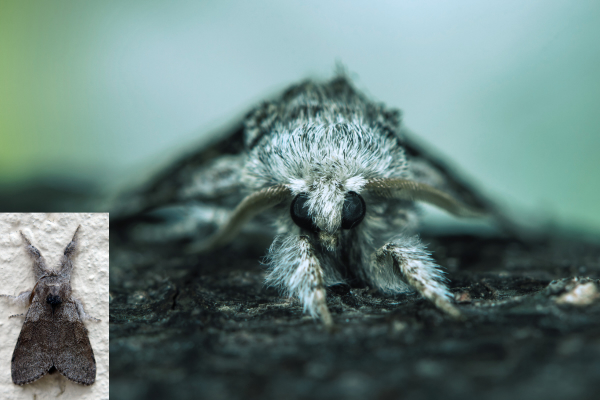Have you discovered a flurry of caterpillars on your tree? While this might not be an ordinary site, it could be a sign of a Douglas-Fir Tussock Moth infestation. While these creatures might seem harmless, they have the potential to wreak havoc on your forest.
While the Douglas-Fir Tussock Moth is native to Colorado and typically maintains a balanced presence in the region, under specific conditions their populations can surge leading to significant amounts of defoliation and stress to trees.
Continue reading as we delve into the intricacies of the Douglas-Fir Tussock Moth, how to recognize them and what you can do as a property owner.
WHAT IS THE DOUGLAS-FIR TUSSOCK MOTH?
Douglas-Fir Tussock Moth, Orgyia pseudotsugata, is a moth that infests true firs, Douglas-fir, and spruces. Its preferred hosts are Douglas-Firs. Although the moth is a native species, with the right environment and circumstances outbreaks can be seen in Colorado forests.
Caterpillars can be seen after they begin hatching in late-May. The caterpillars often spread to uninfested trees by being blown in the wind from their eggs after hatching. After maturing they pupate and emerge as adult moths in late-July to August. The adults then mate and lay their eggs.
WHAT DOES THE TUSSOCK MOTH DO?
Tussock moth caterpillars defoliate their host tree by feeding on current year needles after they hatch. They then will feed on older needles as fresh needles are exhausted. Defoliation can cause the tree to become stressed which can leave it open to attack from borer beetles. Repeated stress from tussock moths and attacks from beetles can cause the death of the tree.
HOW TO RECOGNIZE THE DOUGLAS-FIR TUSSOCK MOTH?
Egg masses and cocoons can be seen on trees that have a tussock moth presence. Female moths cannot fly so they will often be seen close to their cocoons. Defoliation will also be apparent after bud break as the eggs hatch and the larvae begin to feed. Defoliation usually begins at the top of trees and progresses downwards.
WHAT CAN BE DONE?
Tussock moth populations normally do not require control due to viruses or predators that act as natural controls. However, in times of outbreak, chemical control may be required.
Pesticide sprays can be used to control the population by killing their caterpillars before they can cause too much damage to the tree. They, however, are not the most environmentally friendly and can cause harm to other wildlife including bees and birds.
Trunk injections have also proven to be an effective method of control, but their cost limits most treatments to select trees of value rather than groups of multiple trees.
If you suspect you have a Douglas-Fir Tussock Moth infestation, contact the Splintered Forest Plant Health Care team today to discuss your options. Call us at (303) 819-9840 or visit us online to request assistance!
Handling the Douglas fir tussock moth caterpillar with care is crucial due to its poisonous nature. Monitoring for Douglas-fir tussock moth outbreaks is essential for forest health.
Resources:
https://csfs.colostate.edu/forest-management/douglas-fir-tussock-moth/

